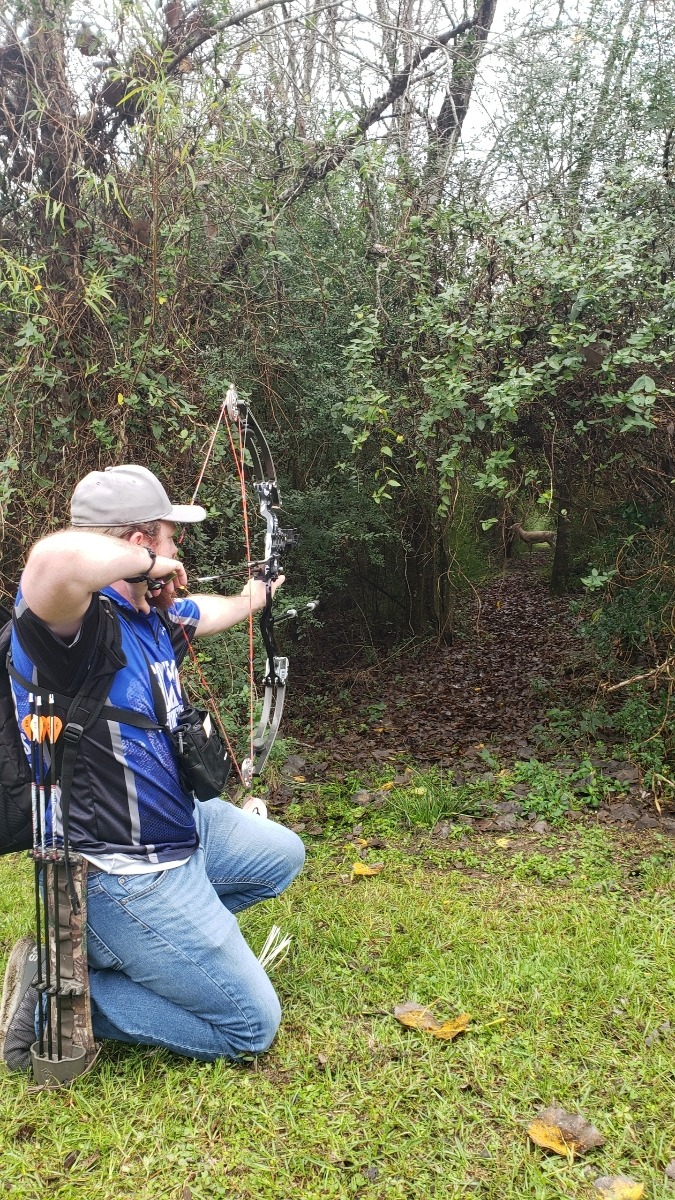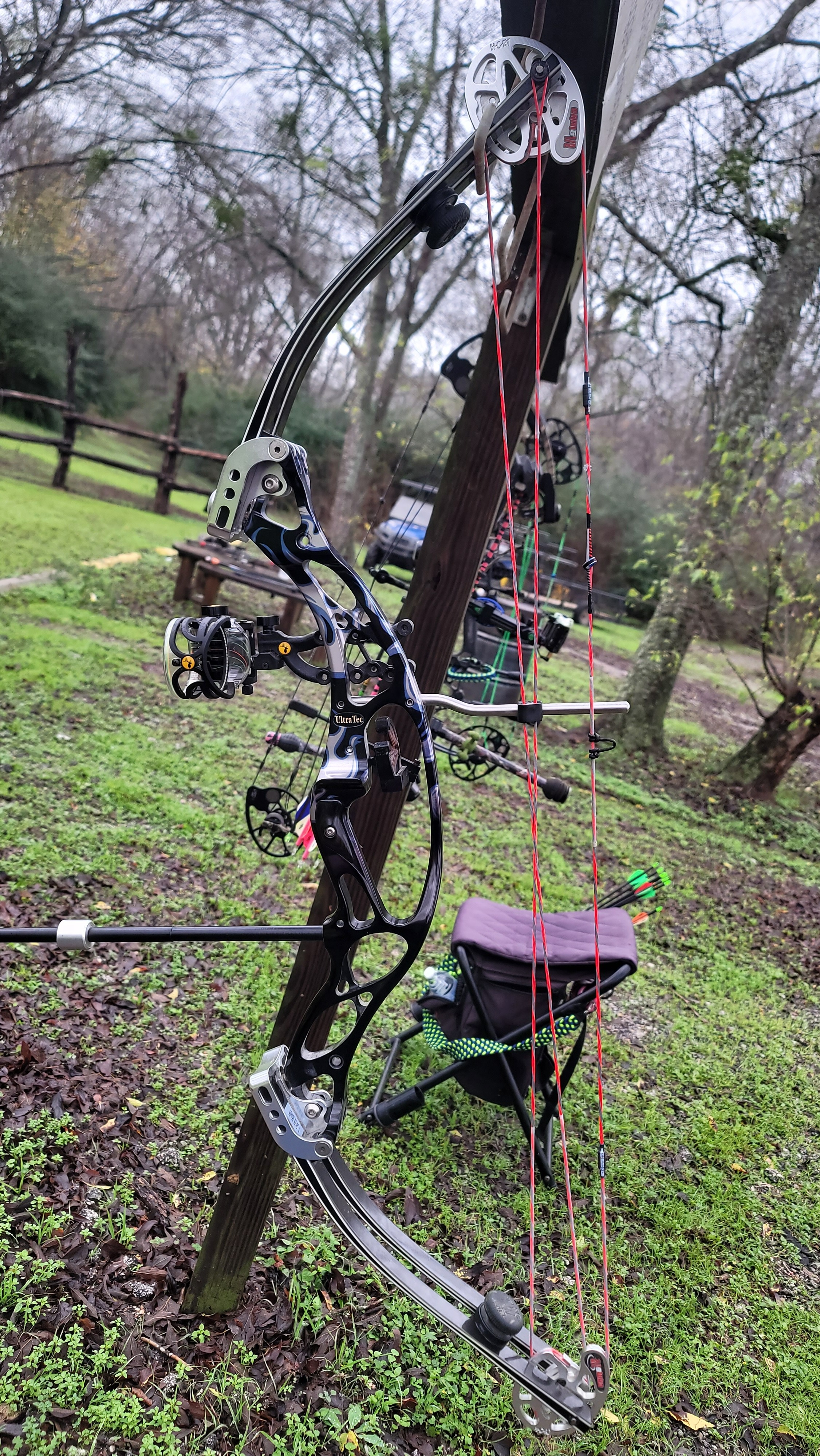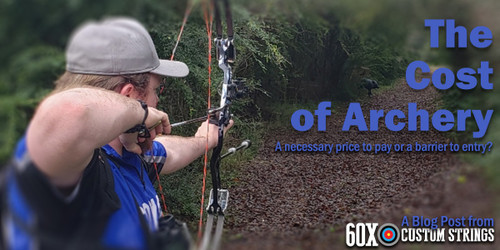The Cost of Archery: A Necessary Price to Pay, Or a Barrier to Entry?
Posted by Robert Carr on Jun 12th 2023
Very early on in my archery career, and for quite some time, archery for me was as simplistic as one could imagine – a wheel bow, clearance-rack arrows, a whisker biscuit, and a shooting glove. It was archery on a budget: No sight, peep, or release. Each of these was a cost I didn’t need to concern myself with. Shooting was purely instinctive or gap shooting.
Now, one might hear this and think I was shooting before the technology had become available. However, I shot this way up until the mid-2010s as I left high school and began college. This way of shooting is the way I was brought into the sport from 5 years old, and there was nothing wrong with it at all, because even though I was a far cry from a decent shot, just having a bow in hand grew my love for the sport tremendously.
Fast forward to today, and you probably wouldn’t say that I’m doing archery on a budget anymore. I have mostly modern bows, sights and peeps with lenses and clarifiers, and releases that test the bounds of modern technology. Above all else, there is one thing that changed with the times and technology – the cost. The archery price tag. We see this in both hunting and tournament archery, but, seeing as we are currently in ASA season, my scope of focus for now will reside with 3D.

For Some, Cost Is a Serious Barrier to Entry
As 2022 drew to a close, I had the pleasure of attending the Fred Bear Charity shoot at Brazos County Archery Club in Bryan, Texas. Being that it was a charity shoot, it reminded me that there are those less fortunate that may not be able to afford a nice Christmas dinner for their family, much less one of the fancy setups many of the tournament archers would be sure to arrive with. In archery, price tags are going up and up—not so much because costs are rising but because more and more archers are opting for more expensive builds to stay competitive. Archery on a budget is not on most people’s minds.
Is It Possible to Shoot Well on a Budget Build?
This got me thinking, “Why can’t someone without an abundance of money to spend on gear come out here and have a good time experiencing the sport of archery?” So, I did what any other person would do, and dusted off the oldest compound I had, threw some 60X custom compound bow strings on it, and dug around for the cheapest accessories I could find to outfit the bow. It was like back in the old days, doing archery on a budget. When all was said and done, I ended up with an un-tuned 2004 Hoyt Ultratec, a whisker biscuit from my first full-size bow, and a 5-pin sight. From this setup, I shot Walmart arrows that I got a couple of years prior on clearance for a dollar a piece. Now, that’s a good archery price! I did, however, cheat and continued to use the hinge I normally shoot with.
Not only did I opt for an old bow that wasn’t tuned in the slightest, I also decided to sight the bow in on the range the morning of the shoot, since one frequently prohibitive archery cost is buying a rangefinder, or even going to a range at all. These are luxuries that not everyone can afford; they’re not accessible to people who are doing archery on a budget.
Turning Heads with My Unusual Build
Things like bow string silencers and dampeners are great to have but not strictly necessary. The loud “THWANG” of the Ultratec rang through the range as my 380-grain arrows zipped towards the target at a blazing fast 220ish feet per second. As one could expect, I got quite a few looks standing there in my 60X jersey, shooting a bow that sounded like a baseboard doorstop, but nevertheless, I was excited to see what the day had in store.

Luckily for me, the shots weren’t too long, but there were challenging shots, nonetheless. From having to thread the needle through a fork in a tree to a half-hidden scoring ring, to shooting straight through bushes at a target some unknown distance on the other side, there was no shortage of arrows skipping through the woods on missed or deflected shots in the field as the day went on. Thankfully, I only lost a nock to one of my arrows. That’s an acceptable archery cost, and when you’re trying to engage with archery on a budget it’s not bad at all.
After turning in scorecards, I had the pleasure of speaking with Brad Timmerman, Director of the Western region for ASA and one of the coordinators of the charity shoot. I told Mr. Timmerman what I was doing with the budget setup I had brought out, asked what his thoughts were on people getting into the sport of archery on a budget, what he thought about archery price concerns, what archery cost concerns he had, and what, if anything, the saturation of archers with extremely expensive archery setups had to do with the direction of the sport of archery as a whole.
He spoke to how many of the archers new to 3D see the top-of-the-line setups that titans in the industry such as Levi Morgan and Dan McCarthy tout on the field, and how it influences archers to not only “buy up” but also to compete in these higher-tier classes when they may very well be suited for another class entirely.
This is the opposite of doing archery on a budget, and it’s not great for the sport. It creates a very top-heavy field, where there are large masses of individuals competing in the 45- and 50-yard classes and very few competing in the more novice-amateur level classes. Unfortunately for those who do compete in the lower-tier classes, this creates an issue not only with buckles and plaques due to lack of participation, but also with lower payouts that disincentivize shooters from participating in these classes altogether. It was for this reason that there was a consolidation of some of the classes in ASA this past year.
As we sat there talking, I pondered what this meant for the future of the sport and what rising costs in archery cost the sport and the community as a whole. I also pondered whether or not I needed to add more Fritos to my chili (the hosts were gracious enough to provide lunch for the archers that day). I thanked Mr. Timmerman for his time and left the shoot with a greater appreciation for the sub-45-yard classes, as well as the work that the ASA puts in to give us a sport to cherish and that brings us together. And I found myself thinking that archery on a budget is completely viable today (and fun!) if you’re simply willing to change your expectations a little bit.
I won’t pretend that in archery price doesn’t matter at all. Looking back, odds were definitely stacked against me in this shoot. I was shooting unknown yardage with a bow that had pins maxed out at 45 yards, and one of the shots ranged 104 yards. With my target setup that day, misjudging by even a yard meant a 2- or 3-inch miss. When all was said and done, I shot a 247 out of a possible 300, dropping 10 points on the 104-yard shot, and receiving -5 points on 2 targets that I missed the 8 ring on but hit foam (aren’t ethics shoots great?), and shooting a handful of 8s.
But honestly? Not bad for doing archery on a budget, and, frankly, the score didn’t matter to me that day anyway.
What Should Archery Cost?
So, what, may you ask, is the point of this story then? The point was to show that it doesn’t take the latest and greatest equipment to go and enjoy archery. You don’t need to worry about a big archery price tag to have a good time. You can absolutely do archery on a budget and “get away with it.” In fact, someone could likely find a used build for a couple hundred dollars, get some 60X ready-to-ship compound bow strings at a good price or some brand-specific bow string, and go out with a friend to have a wonderful time slinging arrows.
After all, those are the roots of what made the sport what it is today.








